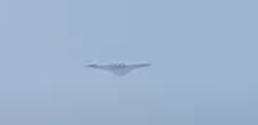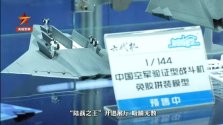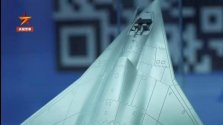Thrust vectoring, of the fluidic kind.No surface movement when doing so many fast maneuvers. How is that possible !?
Should admit, so far we know too few about 6th gen fighter control tech.
You are using an out of date browser. It may not display this or other websites correctly.
You should upgrade or use an alternative browser.
You should upgrade or use an alternative browser.
Chengdu next gen combat aircraft (?J-36)
- Thread starter Blitzo
- Start date
How can you tell it has afterburners on?More footage, with afterburners on.
asif iqbal
Banned Idiot
More footage, with afterburners on.
how does this thing even fly with those surfaces
can you imagine the advances in technological software and hardware to manoeuvre and fly this aircraft
J36 + JXX have really raised the bar in military aviation
when most advanced Western nations are upgrading 4th+ generation aircraft China leaps to 6th generation test flight after test flight
this is clearly a well developed and well defined 6th generation program
its showing more progress since its maiden flight little under 4 months ago than development aircraft 1.5 generations behind
IMO it could indeed be ...
View attachment 150262
By the way, does anyone know the manufacturer of this scale model?
View attachment 150263View attachment 150264
Probably the same one selling FC-31s on Temu.
If only it has just a few more panels it would look more legit cause advance materials science in creating large single piece composite is only for losers.IMO it could indeed be ...
View attachment 150262
By the way, does anyone know the manufacturer of this scale model?
View attachment 150263View attachment 150264
Which program is this from?IMO it could indeed be ...
View attachment 150262
By the way, does anyone know the manufacturer of this scale model?
View attachment 150263View attachment 150264
The picture with words says:
CCTV Military
Sixth generation fighter jets; 1/144; Chinese Air Force Verification Fighter Aircraft Glueless Assembly Model; Pre sale in progress
The 'King of Land Warfare' enters the exhibition hall, attracting countless eyes
“新时模型” in Taobao, only start with ¥37. And i think they are using gaoshanCG's model.IMO it could indeed be ...
View attachment 150262
By the way, does anyone know the manufacturer of this scale model?
View attachment 150263View attachment 150264
Last edited:
Since Yaw control is part of the function of split rudder, it should be used in take off, shouldn't it? Besides, drag induced by split rudder isn't different from drag induced by angled vertical or horizontal stablizers.On Take off you need more speed to achieve lift, open split rudder will induce drag and slow down the aircraft. So no, you don't open the rudder on take off.
Another function of split rudder which we may have already observed in J36's test flight is yaw control. Below is what AI replied to me, using B-2 bomber as example:-
The B-2 bomber, being a flying wing design, lacks a traditional tail and rudder. Instead, it uses a unique system to achieve yaw control (side-to-side movement). The wingtip split rudders, also known as differential air brakes, play a crucial role here. These split rudders can open up on one side of the wing, creating drag and causing the aircraft to yaw in the desired direction. This innovative design helps maintain the stealth profile of the B-2 while ensuring precise maneuverability.



